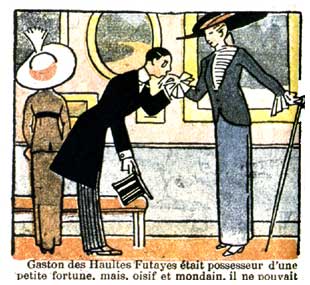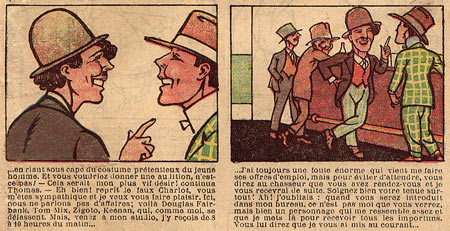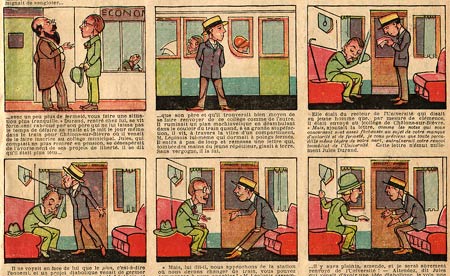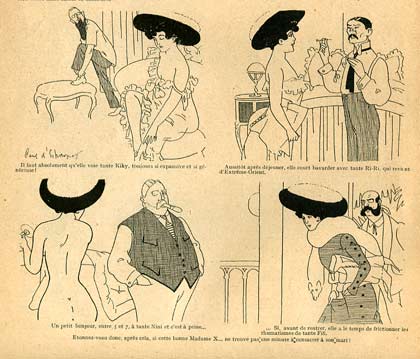'La Piste', Les Belles Images, 8 January 1925.
Paul d'Espagnat was a late 19th-century, early 20th-century French illustrator and comic artist, who flourished between the late 1890s and late 1940s. He was the brother of Georges d'Espagnat (1870-1950), an illustrator in his own right. Paul's cousin, Christian d'Espic (1901-1978), was an engraver. Paul d'Espagnat was the father of physicist and philosopher Bernard d'Espagnat (1921-2015).
Paul d'Espagnat's first work appeared in L'Imagier from 1894 on, and soon his drawings were featured in Frou-Frou, Le Pêle-Mêle and Bon Vivant. Using several pseudonyms, such as S-Pania, I-Béric and Béric, to sign his work, d'Espagnat drew for numerous publications of the publishing house Arthème Fayard, such as La Jeunesse Illustrée (1903-35) and Les Belles Images (1904-36).
'Boxe et Hymen'.
For La Jeunesse Illustrée, d'Espagnat created, among others, 'Boxe et Hymen' in 1908. He was art director of Les Belles Images for a while, and he drew 'Le Secret de la Maison Jaune' in L'As in 1937. He created several comical strips in Fillette, such as 'Les Galéjades d'Olivette de Marseille' (1939-40) and 'Mademoiselle Risquetout' (1940-41).
'Bedgood Tournera chez Charlot' (Les Belles Images, 13 November 1924).
D'Espagnat was one of the first comic artists who experimented with speech balloons. Some of his works featured characters with disproportional heads, a heritage of French caricaturists from the turn of the 19th into the 20th entury, like Caran d'Ache, Tybalt and Raymond Tournon. Other works had a more Art Deco style, with silhouette characters, like in 'Pages de Gloire Française et d'Humour', based on the memoires of General Marbot and published in France-Soir Jeudi.
'Le Pion' (Les Belles Images, 30 October 1924).
D'Espagnat was also a huge fan of animation, which resulted in his Disney-like section 'Page des Juniors' in Belles Images in 1934-35. His final known work was 'Le Paladin des Paladins', which also appeared in France-Soir Jeudi. With his clearness of style, and recognizable characters, Paul d'Espagnat can be considered the French equivalent of George McManus.
Le Sourire, 1909.






